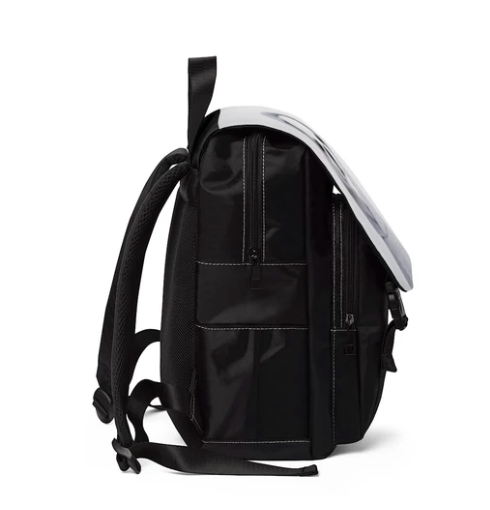Lifestyle
Capacity Rated as the Most Important Factor when Selecting Backpacks for Kids

Every kid going to school needs a backpack, and the selection of which one has always been tough for parents. While most of the schools do not put restrictions on what types of backpacks kids use, many give a lot of books to students to take home. In such cases, when surveyed parents from different corners of the world, capacity was rated as the most important factor to consider for the backpacks.
Many countries like India are also setting the weight limits on the school backpacks to make the life of students at home easier. Such limits may help prevent damage to children’s backs from heavy books on their way from school to home. Many parents shared that picking an ideal backpack with sufficient capacity is really a tough decision. Too much of empty backpack is uncomfortable for children, while heavily stuffed backpack of greater capacity puts a lot of force on the backbone of children. To tackle this situation, there is an awesome backpack by Burnt My Taco that can reduce the some of the tensions for these parents. Both comfort, coupled with trend setting designs like these, are also these book bags are great choice for both younger children through college students.

What Can You Do?
What are some other things you can do to help reduce the weight of your child’s backpack? Consider getting a second set of textbooks to keep at home for your child. Weigh your child’s backpack, it should ideally be no more than 10-15% of their body weight to carry.
- Lighten the load.
- Consider talking to school administrators or speak up at PTA or school board meetings if you have a concern for the weight of your child’s bag coming home.
- The school may be able to offer some additional time for children to get to lockers during the day to exchange books in between classes.
- Your local legislators may be able to offer help as well.
- Many US schools have already switched over to using laptops and laptop bags for that matter, and document sharing systems which can help reduce weight of a child’s bag.
- Backpacks that are used to carry heavy books should not have narrow straps that dig into the shoulders can interfere with circulation and nerves. These types of straps can lead to tingling, numbness, and weakness. Look for a backpack with multiple compartments to help distribute the weight which is ideal.
- Improper backpack use may also eventually lead to bad posture. Younger children may be especially at risk for backpack-related injuries because they are just smaller and may carry loads that are heavier in proportion to their body weight. Again, check the weight of your child’s bag in proportion to their own body weight.
- Besides capacity, there are some more factors that play an important part in deciding the best backpack for kids. Straps of the bag should be comfortable for the shoulders, and the bag itself should protect books from inclement weather.
What Can Your Kids Do?
- Lift properly, teach your child to bend at the knees.
- Load heaviest items closest to the center of your back.
- Kids who sling a backpack over one shoulder as many do, may wind up leaning to one side to offset the extra weight.
- Encourage your child to use a backpack with two shoulder straps to help prevent lower and upper back pain and strain their developing shoulders and neck.
Since it is really all about the kids, the design and color of school bags, laptop backpack, and travel backpacks are also very important. Mostly, kids pick those designs that they may see around them in their lives and make them happy. Brand is the least important factor for the parents and for many kids, the brand does not even matter at all. Many brands do not focus much on making both comfortable and designer bags for kids. Thankfully there are still some good companies out there like the one we found ourselves, that can offer a great solution for both parents concerns for functionality in a design that kids no matter what their age, are sure to love.
Lifestyle
The Missing Piece in Self-Help? Why This Book is Changing the Wellness Game

Self-help shelves are full of advice — some of it helpful, some of it recycled, and most of it focused on “mindset.” But Rebecca Kase, LCSW and founder of the Trauma Therapist Institute, is offering something different: a science-backed, body-first approach that explains why so many people feel struck, overwhelmed, or burned out — and what they can actually do about it.
A seasoned therapist and business leader, Kase has spent nearly two decades teaching others how to navigate life through the lens of the nervous system. Her newest book, “The Polyvagal Solution,” set to release in May 2025, aims to shake up the wellness space by shifting the focus away from willpower and onto biology. If success has felt out of reach — or if healing has always seemed like a vague concept — this book may be the missing link.
A new way to understand stress and healing
At the heart of Kase’s approach is polyvagal theory, a neuroscience-based framework that helps explain how our bodies respond to safety and threat. Developed by Dr. Stephen Porges, polyvagal theory has transformed the way many therapists understand trauma, but Kase is bringing this knowledge to a much wider audience.
“The body always tells the truth,” Kase says. “If you’re anxious, exhausted, or always in overdrive, your nervous system is asking for support, not more discipline.”
“The Polyvagal Solution” makes this complex theory digestible and actionable. Instead of promising quick fixes, Kase offers strategies for regulating the nervous system over time, including breathwork, movement, boundaries, and daily practices that better align with how the human body functions. It’s less about pushing through discomfort and more about learning to tune in to what the body needs.
From clinical expertise to business insight
What sets Kase apart isn’t just her deep understanding of trauma but how she blends that knowledge with real-world experience as a business owner and leader. As the founder of the Trauma Therapist Institute, she scaled her work into a thriving company, all while staying rooted in the values she teaches.
Kase has coached therapists, executives, and entrepreneurs who struggle with burnout, anxiety, or feeling disconnected from their work. Regardless of who she works with, though, her message remains consistent: the problem isn’t always mindset — it’s often regulation.
“Success that drains you isn’t success. It’s survival mode in disguise,” Kase explains. Her coaching programs go beyond traditional leadership training by teaching high achievers how to calm their nervous systems, enabling them to lead from a grounded place, not just grit.
Making the science personal
For all her clinical knowledge, Kase keeps things human. Her work doesn’t sound like a lecture but rather like a conversation with someone who gets it. That’s because she’s been through it herself: the long hours as a therapist, the emotional toll of supporting others, the realities of building a business while managing her own well-being.
That lived experience informs everything she does. Whether she’s speaking on stage, running a retreat, or sharing an anecdote on her podcast, Kase has a way of weaving humor and honesty into even the heaviest topics. Her ability to balance evidence-based practice with practical advice is part of what makes her voice so compelling.
Kase’s previous book, “Polyvagal-Informed EMDR,” earned respect from clinicians across the country. But “The Polyvagal Solution” reaches beyond the therapy community to anyone ready to understand how their body is shaping their behavior and how to create real, sustainable change.
Why this message matters
We’re in a moment where burnout is common and overwhelm feels normal. People are looking for answers, but many of the tools out there don’t address the deeper cause of those feelings.
That’s where Kase’s work lands differently. Instead of telling people to “think positive” or “try harder,” she teaches them how to regulate their own biology. And in doing so, she opens the door for deeper connection, better decision-making, and more energy for the things that matter.
As more workplaces begin to embrace trauma-informed leadership, more individuals are seeking solutions that go beyond talk therapy and motivational content. Kase meets that need with clarity, compassion, and a toolkit rooted in both science and humanity.
A grounded approach to lasting change
What makes “The Polyvagal Solution” stand out is its realism. It doesn’t ask readers to overhaul their lives but instead asks them to listen — to pay attention to how their bodies feel, how their stress patterns manifest, and how even small shifts in awareness can lead to significant results over time. Whether you’re a therapist, a team leader, or someone trying to feel more at ease in your own skin, this book offers a way forward that feels both grounded and achievable.
Rebecca Kase isn’t just adding another title to the self-help genre. She’s redefining it by reminding us that we don’t have to muscle our way through life. We just have to learn how to work with, not against, ourselves.
And maybe that’s the real game-changer we’ve been waiting for.
-

 Tech4 years ago
Tech4 years agoEffuel Reviews (2021) – Effuel ECO OBD2 Saves Fuel, and Reduce Gas Cost? Effuel Customer Reviews
-

 Tech6 years ago
Tech6 years agoBosch Power Tools India Launches ‘Cordless Matlab Bosch’ Campaign to Demonstrate the Power of Cordless
-

 Lifestyle6 years ago
Lifestyle6 years agoCatholic Cases App brings Church’s Moral Teachings to Androids and iPhones
-

 Lifestyle4 years ago
Lifestyle4 years agoEast Side Hype x Billionaire Boys Club. Hottest New Streetwear Releases in Utah.
-

 Tech7 years ago
Tech7 years agoCloud Buyers & Investors to Profit in the Future
-

 Lifestyle5 years ago
Lifestyle5 years agoThe Midas of Cosmetic Dermatology: Dr. Simon Ourian
-

 Health6 years ago
Health6 years agoCBDistillery Review: Is it a scam?
-

 Entertainment6 years ago
Entertainment6 years agoAvengers Endgame now Available on 123Movies for Download & Streaming for Free
